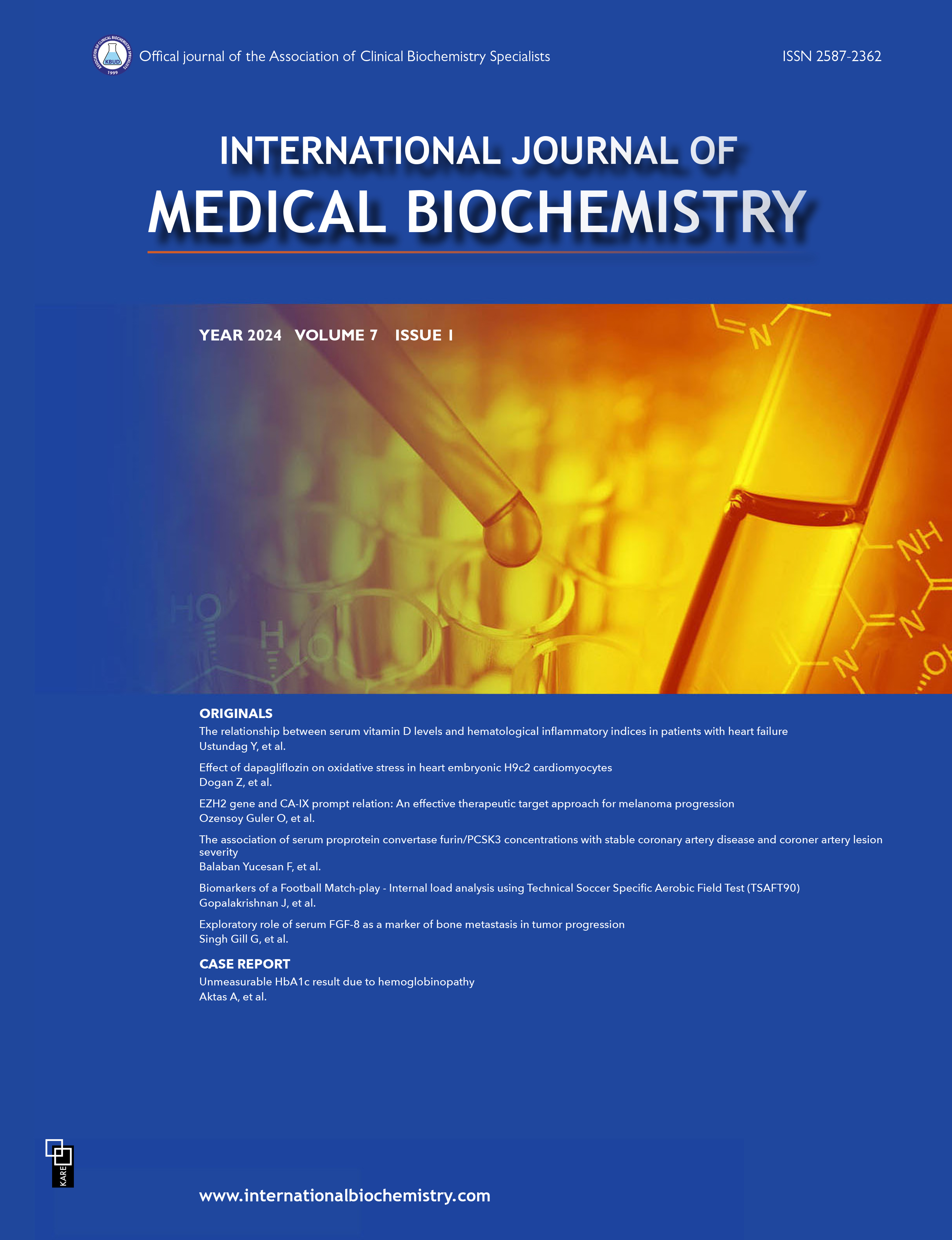The relationship between vitamin D status and graft function in renal transplant recipients
Bilge Karatoy Erdem1, Vural Taner Yilmaz2, Gultekin Suleymanlar2, Filiz Ozcan1, Asli Baykal Ataman1, Halide Akbas11Department of Clinical Biochemistry, Akdeniz University, Antalya, Turkey2Department of Nephrology, Akdeniz University, Antalya, Turkey
INTRODUCTION: Bone and mineral metabolism disorders are important potential complications after renal transplantation. The purpose of this study was to demonstrate the relationship between vitamin D, 1,25-dihydroxyvitamin D3 [1,25(OH)2D3], calcium, and phosphorus metabolism with graft function in renal transplant recipients.
METHODS: This prospective longitudinal study included 30 renal transplant recipients (10 female, 20 male; mean age: 40.30±12.86 years). Blood and urine samples were collected before and 6 months after transplantation. Serum creatinine, blood urea nitrogen (BUN), calcium, phosphorus, alkaline phosphatase (ALP), glucose, albumin, parathyroid hormone (PTH), 25-hydroxyvitamin D [25(OH)D], and plasma 1,25(OH)2D3 levels were measured. In addition, the urine protein/creatinine (P/C) ratio was calculated. The plasma 1,25(OH)2D3 level was determined using liquid chromatography-tandem mass spectrometry.
RESULTS: The posttransplant level of serum phosphorus, PTH, creatinine, BUN and ALP was found to be significantly decreased (p=0.0001; p=0.011 for ALP). Although the plasma 1,25(OH)2D3 level had significantly increased (p=0.0001) after transplantation, no significant difference in the serum 25(OH)D level was observed. The urine P/C ratio was found to be significantly decreased after transplantation (p=0.007). A deficiency of vitamin D was observed frequently both before (87%) and after (73%) transplantation.
DISCUSSION AND CONCLUSION: Persistent vitamin D deficiency was detected in the recipients even after transplantation, although the serum PTH level decreased. Some studies published to date draw a direct link between serum vitamin D level and graft function; however, evidence for this link was not observed in the present study. Long-term monitoring may be needed to evaluate the correlation between vitamin D level and graft function.
Corresponding Author: Halide Akbas, Türkiye
Manuscript Language: English



















